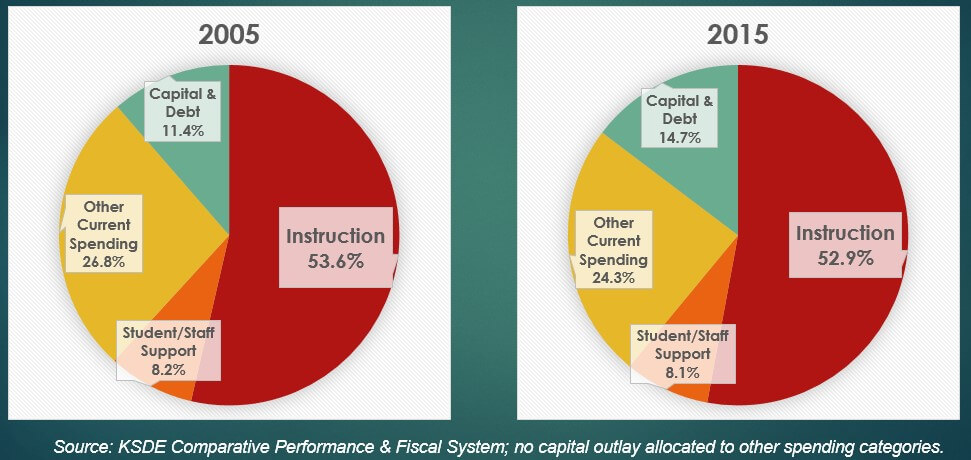It’s hard to imagine that any court would threaten to violate students’ constitutional right to education by closing schools over a tiny funding dispute, but that’s the bizarre reality we face in Kansas. Since statutory prohibition of school closure as set forth in K.S.A. 60-2106(d) and K.S.A. 72-64b03(b) is obviously insufficient to deter the Supreme Court from threatening such action, a constitutional amendment is needed to protect students by prohibiting the closure of schools over funding disputes.
The Constitution must also be amended to protect students by permanently resolving the litigation cycle and get the focus back in the classroom where it belongs. Before getting to the proposed solution, let’s review the underlying facts.
The Article 6 requirement for the Legislature to make suitable provision for finance of the state’s educational interests really only serves to address the monetary demands of school districts and the special interests supported by school funding. The Constitution says money must be provided but there is no requirement that schools use the money efficiently or to produce any specific outcomes.
Despite the fact that per-pupil funding continues to set records and increased 45% more than if adjusted for inflation over the life cycle of the old funding system, here are the harsh realities of student achievement in Kansas:
- Only 32% are college-ready in English, Reading, Math and Science (ACT)
- Less than 25% of low income kids are Proficient in Reading and Math, and only about half of the more affluent students are Proficient (NAEP, 4th Grade and 8th Grade)
- Low income students are 2 to 3 years’ worth of learning behind…in the 4th Grade (NAEP)
- At the current pace, it would take centuries to close low income achievement gaps.
The data clearly shows that just spending more will not change anything. Money matters, of course, but when pressed, even most researchers who believe there is a correlation between money and outcomes admit that it’s how money is spent that makes a difference rather than how much. Most also readily admit that simply spending more does not CAUSE outcomes to improve.
Local school boards alone decide how to allocate resources and here’s a summary of their actions over the last ten years. Funding increased by nearly $2 billion but the percent of resources allocated to Instruction declined to 52.9%. In fact, the share allocated to Student and Staff Support as well as Other Current Spending also declined. Only Capital & Debt increased, from 11.4% to 14.7%.
 For some perspective on the shift to Capital & Debt in Kansas, consider these facts:
For some perspective on the shift to Capital & Debt in Kansas, consider these facts:
- Debt Service payments jumped 72% over the last 10 years, from $286 million to $493 million per year.
- $4.8 billion in new bonds were issued by just 143 school districts over the last 10 years.
- Bonded indebtedness is $5.4 billion and increased $2.2 billion or 71% since 2005.
- Kansas had the 10th highest per-pupil indebtedness according to 2014 Census data, at $10,211 on a headcount basis.
Additional documentation of local school boards’ placing higher priorities on something other than student needs can be found here, here, here, here and here.
Given these funding and achievement realities, we propose two constitutional amendments be placed on the ballot for voters’ consideration, with the one receiving the largest number of votes being adopted:
- Remove “suitable” from Article 6 so that neither the Legislature nor school districts are held accountable for any specific action.
- Hold both parties accountable by clearly defining a formula-driven minimum funding level the Legislature must provide (i.e., not something subjective for courts, school lawyers and legislators to ‘interpret’) and requiring school districts to achieve district-specific minimum achievement goals or lose their accreditation, at which point students in unaccredited districts receive a state-funded Education Savings Plan to attend a public or private school of their choice.
This way, voters can decide whether everyone on no one should be held accountable. Option 2 is the way to put students first and get the focus out of courtrooms and back into classrooms.




